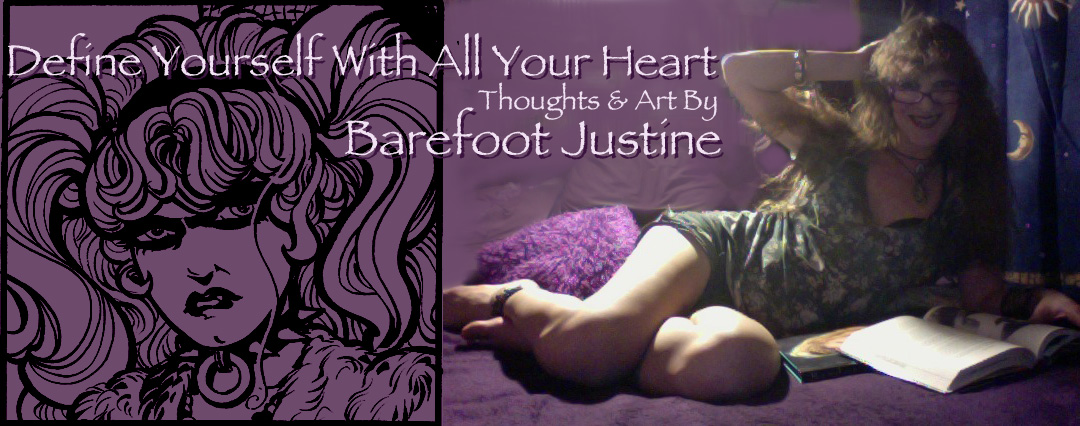Writing Off Disney…?

 A lot of things are on the list of things cool, hip, progressive, or intelligent people must feel obliged to dismiss and/or dislike. Obviously among those things would be McCartney, Star Wars (for some), and Disney. Of course, these are three of my favorite things, and I consider myself cool, hip, progressive and intelligent as well... so what does any of this mean? And what does it mean that all through the '60's and through the '80's much of the music of the past was dismissed as "middle of the road," but is now considered hip? In other words a lot of this is merely fashionable and random, and usually based on utterly specious trendy thinking. So what's to be done? For me it means spending some time trying to share my very different point of view in an effort to offer an alternative to the established dogma among the intellectuals of the time. Again and again I find that the root of the problem is often not so much about the politics of a particular artist, it's more of a reactionary cynicism coming from people who are threatened by both popularity and beauty. I see it as a clash of world-views between that of the romantic (such as myself, McCartney, etc.) and the cynics (critics, hardcore subculturalists and such).
A lot of things are on the list of things cool, hip, progressive, or intelligent people must feel obliged to dismiss and/or dislike. Obviously among those things would be McCartney, Star Wars (for some), and Disney. Of course, these are three of my favorite things, and I consider myself cool, hip, progressive and intelligent as well... so what does any of this mean? And what does it mean that all through the '60's and through the '80's much of the music of the past was dismissed as "middle of the road," but is now considered hip? In other words a lot of this is merely fashionable and random, and usually based on utterly specious trendy thinking. So what's to be done? For me it means spending some time trying to share my very different point of view in an effort to offer an alternative to the established dogma among the intellectuals of the time. Again and again I find that the root of the problem is often not so much about the politics of a particular artist, it's more of a reactionary cynicism coming from people who are threatened by both popularity and beauty. I see it as a clash of world-views between that of the romantic (such as myself, McCartney, etc.) and the cynics (critics, hardcore subculturalists and such).
"Everyone in the world will come to these gates. Why? Because they want to look at the world of the future. They want to see how to make better human beings. That's what the whole thing is about. The cynics are already here and they're terrifying one another. What Disney is doing is showing the world that there are alternative ways to do things that can make us all happy. If we can borrow some of the concepts of Disneyland and Disney World and Epcot, then indeed the world can be a better place." Ray Bradbury
When it comes to Disney, and by that I mean both Walt the man and Disney the evil empire, there are good reasons to recoil against them, but better reasons not to. Dismissing Disney with broad brushstrokes is something people do when they are fixed on some sort of reactionary punk purity, and purity in such things is nothing more than another form of dogma. People, no matter how different or progressive they may be, seem to need dogma... I know I do, but Disney dismissing is not a dogma that suits any artist well.
When we dismiss Disney we throw the baby away with the bath water. It is important to keep in mind that no matter how we may feel about Walt's politics, the villainy of the Disney corporation, the princess fetishization, and the arguable cuteness of small portions of it... those elements are only aspects of a much larger and much more complicated entity. To throw away Disney is to throw away hundreds of moments of beauty as well as powerfully rendered darkness. It is to throw away the work of hundreds of brilliant artists, and the love child of a visionary. To dismiss Disney is to dismiss one of the most inspired visionaries of 20th century art and culture--and you don't even have to like Walt to see that this is so.
 There are numerous examples of the spectacular artists and artistry that has come from the Disney studios, and I'll talk about a few of them now. Let's start with simple character animation. Yes, it may be true that Warner Brothers cartoons are "funnier" (though I would argue that the Disney cartoons are quite funny, too, it's just a different kind of funny--less smart-assy), but the one thing the Disney cartoons win hands down for is character animation. That lovely still of Goofy is from the classic "Lonesome Ghosts" short (as is the masterful haunted house at the top of this post). While "Lonesome Ghosts" is not only a brilliant moody cartoon, one that I used to daydream about as a child, it not only features some classic timing and comedy, beautiful backgrounds and design, the character animation, especially where Goofy was concerned, is some of the best... the very best. The cartooning itself, the design of every character, is appealing and exquisitely drawn throughout. The accompanying still is from "Mr. Duck Steps Out" which features one of many examples of perfect character animation. While I could not find an exemplary still of Donald dancing, the scenes of Donald dancing in that cartoon leave me laughing and jaw-dropped... it is so brilliantly animated, so well observed, so beautifully cartooned and tastefully exaggerated. I could of course go on and on in this vein, but let's consider another side of that same coin.
There are numerous examples of the spectacular artists and artistry that has come from the Disney studios, and I'll talk about a few of them now. Let's start with simple character animation. Yes, it may be true that Warner Brothers cartoons are "funnier" (though I would argue that the Disney cartoons are quite funny, too, it's just a different kind of funny--less smart-assy), but the one thing the Disney cartoons win hands down for is character animation. That lovely still of Goofy is from the classic "Lonesome Ghosts" short (as is the masterful haunted house at the top of this post). While "Lonesome Ghosts" is not only a brilliant moody cartoon, one that I used to daydream about as a child, it not only features some classic timing and comedy, beautiful backgrounds and design, the character animation, especially where Goofy was concerned, is some of the best... the very best. The cartooning itself, the design of every character, is appealing and exquisitely drawn throughout. The accompanying still is from "Mr. Duck Steps Out" which features one of many examples of perfect character animation. While I could not find an exemplary still of Donald dancing, the scenes of Donald dancing in that cartoon leave me laughing and jaw-dropped... it is so brilliantly animated, so well observed, so beautifully cartooned and tastefully exaggerated. I could of course go on and on in this vein, but let's consider another side of that same coin.
The same could be said to be true of the character animation in Sleeping Beauty, though the mood, spirit, tone, and even the animation itself is wildly different, the character animation is no less astounding, and certainly no less worthy of study.

 With Sleeping Beauty we get to enjoy the most elegant and graceful character animation I have ever seen, all of it underscored by the mastery of Marc Davis' design work, and, of course, animation work. Marc Davis is himself another fine reason to look closer at Disney as art and less at Disney as some monolithic villain. Disney was never a monolith, oh, it had a head in Walt, but Disney was a collective of inspired artists, top notch designers, and masters of their crafts. The beautiful drawing of Briar Rose as well as the drawing of Maleficent were both by Mark Davis.The challenge that was presented to Marc Davis and the other animators in the studio at the time was to create character designs that could not only compete with but hold up to Eyevind Earle's backgrounds.
With Sleeping Beauty we get to enjoy the most elegant and graceful character animation I have ever seen, all of it underscored by the mastery of Marc Davis' design work, and, of course, animation work. Marc Davis is himself another fine reason to look closer at Disney as art and less at Disney as some monolithic villain. Disney was never a monolith, oh, it had a head in Walt, but Disney was a collective of inspired artists, top notch designers, and masters of their crafts. The beautiful drawing of Briar Rose as well as the drawing of Maleficent were both by Mark Davis.The challenge that was presented to Marc Davis and the other animators in the studio at the time was to create character designs that could not only compete with but hold up to Eyevind Earle's backgrounds.
The graphic brilliance of Eyevind Earle is another fine reason to keep your eye on Disney. As I had said before, Walt Disney had announced that the backgrounds in Sleeping Beauty were to be dreamed up and rendered by Eyevind Earle, so much so that all the other background artists had to be supervised by and had to work in the style of Eyevind Earle. I swear I can often pick out the Eyevind Earle backgrounds from the backgrounds of the other fine artists that contributed.
Eyevind's work became a touchstone for me as I struggled to marry two worlds, that of the flat and decorative against that of the highly textured. Eyevind managed to find just the right balance, his work in perfect harmony, proving to me that work could be stylized and graphic without losing a love of texture and depth. Eyevind proved to me that it could work, moreso, by looking at his work I saw for myself exactly how it was done... though I never did it so well. Below is one of his backgrounds from the film. Observe the beauty of the textures and how wonderfully they work with the flat patterns and stylish layouts.
And below that, one of his more recent paintings, none of them less powerful than the work he did on Sleeping Beauty.
The images are obviously masterful, and definitely worth learning from for even the most cynical of artists. This is what I see in Disney, the work of many gifted and disciplined artists. Though they were not merely gifted and disciplined, like Walt, they were inspired visionaries in their own rights.
Let's move from the backgrounds of Eyevind Earle to the backgrounds in Pinocchio:
 In Pinocchio Walt hired the finest watercolorists in America to create the backgrounds. This too is a fine reason not to write off Disney... to write off Disney is to write off the finest watercolorists America had to offer at that time. Pinocchio is a relic, a holy relic, a museum quality collection of masterful watercolors. See above and below!
In Pinocchio Walt hired the finest watercolorists in America to create the backgrounds. This too is a fine reason not to write off Disney... to write off Disney is to write off the finest watercolorists America had to offer at that time. Pinocchio is a relic, a holy relic, a museum quality collection of masterful watercolors. See above and below!
Here's the thing... erase the word "Disney" from every piece we have looked at here... and what you see should be a collection of awe-inspiring art from artists worthy of study, respect, and their due. To dismiss Disney is to dismiss them. It would seem a tragedy to dismiss the work of these artists in some misguided and juvenile attempt to hold onto some angry reactionary purity. What a loss it would be to the development of any artist not to look up to these artists as role models.
Let's not dismiss the mad geniuses of the Disney studios... Albert Hurter for one. Albert Hurter found it impossible to work under Disney, his opinions and skills were too much his own for him to be comfortable seeing the vision of a another man through. Albert (who was with Disney in the days of Snow White and Pinocchio) was an obsessive sketcher... and by obsessive I not only mean in regards to the frequency with which he sketched, but obsessive in regard to the subjects he returned to over and over again. Albert additionally had a taste for the bizarre, and even grotesque, as anyone fortunate enough to have ever laid their hands on a rare copy of "ALbert Hurter, He Drew As He Pleased." The sketches within are all inspired with a madness and twisted humor that people even today are unprepared for. I was fortunate to have acquired a copy, and it is one of the most treasured tomes in my library.

 No less able to work under Walt was Kay Nielsen, who left his mark on Fantasia! Nielsen was a respected designer and book illustrator in his own right, and though he died poor, he found it impossible to work under a man with as much vision as he himself had. This is no fault of Walt's... visionaries simply cannot get along for long. These lovely concept art pieces showcase Nielsen's work with the Disney studios... and however much people may argue the evils of Disney as a man and an empire... I just can't dismiss Kay Nielsen, nor the masterful job the studio did bringing his work to life.
No less able to work under Walt was Kay Nielsen, who left his mark on Fantasia! Nielsen was a respected designer and book illustrator in his own right, and though he died poor, he found it impossible to work under a man with as much vision as he himself had. This is no fault of Walt's... visionaries simply cannot get along for long. These lovely concept art pieces showcase Nielsen's work with the Disney studios... and however much people may argue the evils of Disney as a man and an empire... I just can't dismiss Kay Nielsen, nor the masterful job the studio did bringing his work to life.
I know for a fact that P. Craig Russell is a huge fan of Nielsen, and of the "Night On Bald Mountain" passage in Fantasia. It's influence on him is obvious, and it is something we discussed when I was learning from him. In fact Craig was always a huge Disney fan, and as broad and fine as his tastes were... watching him watch Disney films was pure joy. His love for them would consume him and any artist in his gravity. I, in fact, credit P. Craig Russell for turning me on to Disney as Art! Without his gentle and wise guidance, I too may have fallen into the simple-minded trap of anti-Disney cynicism.
Through Craig I also learned how much there was to learn from the story-telling in Disney films, the angles, tone, point of view... all of it became a wonderland to my learning eyes in those days so long ago. Craig also taught me that the people who worked on Disney films had names, had styles, personalities and vision all their own. he taught me that once you became familiar with those artists it would be impossible to dismiss them. he taught me about Eyevind Earle, Marc Davis, and even the titanic animation master... Vladimir "Bill" Tytla who brought not only Pinocchio's nemesis Stromboli to life, but Kay Nielsen's Chernebog!
Through Tytla I learned what it meant for a character to have mass, weight, and a center of gravity. His most famous characters were weighty monoliths, and he knew how to make them massive, elegant, and how to give them character. Yes, there was plenty of elegance and grace in Tytla's monolithic demon... and that grace is what lesser animators (or a lesser studio) would fail to render and realize. That grace was what made Chernabog work! That little sprinkle of irony and class made the demon's immensity and evil all the more stirring. Indeed, any artist wishing to learn about mass, gravity, solidity, as well as subtlety and irony, would be wise to turn to Disney... those characters were always solid and real, whether they were Stromboli or the much later and loveable Baloo the Bear.
 Weight, elegance, character... and power! There is power in Disney films, great power, and darkness, primal darkness. Witness even the impactful and boldly designed battle between Bambi and his foe! How many times I have turned to that when drawing similar scenes I can not tell you. Similarly the fantastic fight sequences between the Tramp and the rat, or the Tramp and the other dogs in Lady and the Tramp are scenes I have returned to often when working out fight scenes. These are lessons not to be disregarded.
Weight, elegance, character... and power! There is power in Disney films, great power, and darkness, primal darkness. Witness even the impactful and boldly designed battle between Bambi and his foe! How many times I have turned to that when drawing similar scenes I can not tell you. Similarly the fantastic fight sequences between the Tramp and the rat, or the Tramp and the other dogs in Lady and the Tramp are scenes I have returned to often when working out fight scenes. These are lessons not to be disregarded.
The lessons to be learned from Disney films not only spring from the artistry but from the world-view Ray Bradbury spoke of in that lovely quote I used above. There were important lessons, ones that stem from the deep roots of fairy tales, lessons that taught not merely right from wrong, but how to frame a more beautiful world-view. Through Disney we learn not to laugh at a romantic viewpoint, we learn to embrace it. In particular, I know I didn't really learn "Thou shalt not lie" from the Bible, no, I found Pinocchio to be a much more direct and terrifying cautionary tale. Beyond that, all through my life, to this day... I still wish I had a friend like Baloo! Through Disney I learned a lot about love, honesty and loyalty... and just as importantly... I learned to love the wonderful world of color, which is also why I recoil against the cynical "edgy" monochromaticism of modern films. Disney showed me the truth... and truth withstands even in the face of overwhelming pressure to disregard it, and the truth is... ain't nothing wrong with color!
Of course there are countless other life lessons, scenes and artists we would lose were we to disregard Disney, and countless other art lessons to be learned about everything from character design to timing, from composition to body language... it's all there! if you need to learn it, know it, do it, or understand it... turn to Disney for lessons, you won't regret it... and it will be our little secret!
As for me, I have no interest in keeping it a secret... I have learned countless lessons not merely from the characters and stories of the Disney universe, but I learned a lot about art from the artists who worked for Disney, but perhaps even more important than that, as I scroll down the screen and look at these images... I feel warm and happy, full of hot chocolate and chocolate chip cookies... and it's good, real good! All this art talk aside... Disney films provide a warm refuge from life's many storms, they make me feel good, and this is not mere escapism... no, there is too much to learn about life, love and art for that.
“Animation is not just for children – it’s also for adults who take drugs.” Paul McCartney
I think there is a bit of thought about that Disney cartoons are for kids, but I disagree wholeheartedly... and I think those people have it all backwards... Disney cartoons aren't for kids... but dismissing Disney... now THAT... is kid's stuff.








